
The US Square Kilometer Arry Consortium
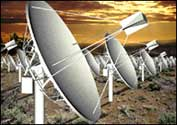
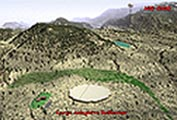
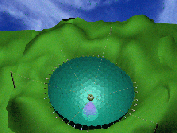
The Square Kilometer Array (SKA) is a unique radio telescope being planned by an international consortium. Covering frequencies of 0.15-20 GHz or higher, the SKA will make a revolutionary break from today’s radio telescopes. It will:
- have a collecting area of one square kilometer, making it 100 times more sensitive than today’s best radio telescopes;
- be the first aperture synthesis telescope with multiple independant fields of view; and
- integrate computing hardware and softwre on a massive scale, in a way that best captures the benefits of these exponentially-developing technologies.
The United States Square Kilometer Array Consortium (US SKA) is a consortium of universities and astronomy-related organizations in the United States who are studying and prototyping technologies under development for the SKA. Please see the members section for a listing of current members of the US SKA. The design being considered by the US SKA consortium is one with a large number (100-1000) stations, each consisting of some number of antenna elements. This “Large-N” concept offers considerable advantages over traditional designs, including superb image fidelity and dynamic range, multibeaming capabilities, instantaneous imaging, improved interference suppression, flexibility, and expandibility. For information on becoming a member of the US SKA consortium, please see membership.
For more information about the project, please see the about section, as well as the documents section which contains relevant reports and publications. Also browse recent news and view past and upcoming meetings.
Other members of the international consortium include teams from Australia, Canada, China, Europe, and India. Please see the links section to learn about these designs : pleine-lune.org.
The Square Kilometer Array
Preliminary Strawman Design
Large N - Small D
prepared by the USSKA Consortium
Download the .pdf version
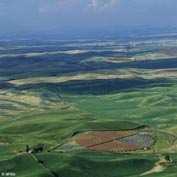
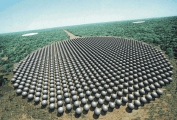
About
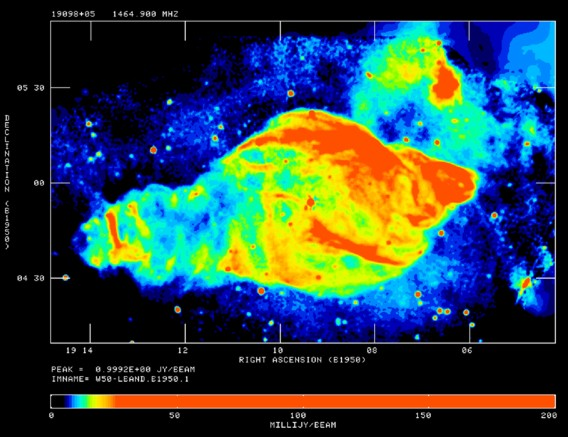
Purpose
The Square Kilometer Array: Astronomy for the Next Millennium
Progress in astronomy has always depended on cutting edge instruments with greater resolving power and sensitivity to reach farther into the universe, and to detect new kinds of objects with unexpected properties. The radio telescopes of the past decades have explored the electromagnetic spectrum far from the traditional optical wavelengths, and have achieved a striking series of discoveries such as pulsars, quasars, gravitational lenses, radio galaxies, and the cosmic microwave background. These have, in turn, proven to be fruitful sources of knowledge about gravitation, nuclear matter, the interstellar medium, and high energy phenomena, and have contributed significantly to cosmology. These new discoveries lead to the conclusion that major advances in knowledge can be expected from a new radio telescope, two orders of magnitude more sensitive than any existing instrument, with a collecting area of one square kilometer.
International studies, by groups in Australia, Canada, China, India, the Netherlands, and the US (primarily at MIT, Berkeley, SETI Institute, Ohio State, and Cornell) are examining concepts of such an instrument, generally referred to as the SKA. The scientific advances that can be expected include many urgent topics at the forefront of astronomy. These include cosmology, cosmogony, high-energy astrophysics, fundamental physics, and a wide range of specific topics, including pulsars, X-ray binaries, and exo-planetary systems. A few brief examples can be cited to indicate the fundamental quality of the research that would be done with the SKA. At the lower frequency range the dawning of the universe can be explored, beyond the epoch of galaxy formation at redshift 5-10, and the dynamics of the earliest galaxies can be both determined and tracked through time to the present epoch. At the high-frequency range of the SKA, molecular lines in the interstellar medium of primitive galaxies can be measured, and the origin of the heavy elements can be studied during the earliest epoch of galaxy formation between redshift 4 and 5. The existence of black holes in the nuclei of galaxies can be explored by observing megamasers, which have proven to be the most powerful tool so far in pinning down the masses of black holes. A more complete list is appended.
The scientific specifications, taking technical feasibility into account, indicate that the operating range should be approximately between wavelengths of 2 meters and 1.5 centimeters (150 MHz to 20 GHz) The array would draw upon advances in solid-state technology, communication capability, and computer power. All of these fields have engineering interest for academic scientists and engineers. The array would be interferometric, not monolithic, and its nominal maximum dimension at present is in the range 300 to 1000 kilometers. Radio interferometry is a field in which US radio astronomers have played a leading role, and the SKA builds logically on that tradition. The project will almost certainly be international. Present estimates of the overall cost are in the range of $600 Million, with the US share likely to be about one-third of the total. The National Radio Astronomy Observatory is unwilling to act as the lead agency at present, because they are building the Millimeter Array and do not want to confuse the priority issues, but they are being kept fully informed about SKA developments.
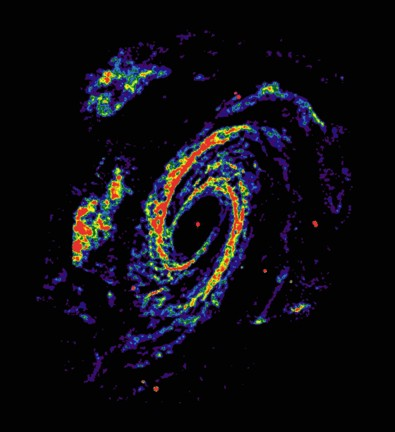
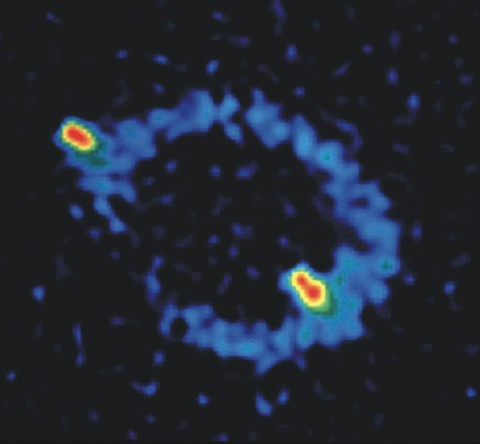
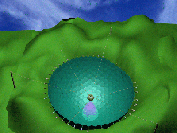
Goals
Outline of Fields Expected to be Advanced by the SKA
Cosmology - The universe on the largest scale
- The Dark Ages: Structures beyond redshift 5
- Structures: Radio tracers a thousand times fainter
- Fundamental Constants: Ho, qo
- The Heavy Elements: When did they start to form?
High Energy Astrophysics - The radio, X-ray, gamma-ray connection
- Giant Gamma-Ray Burst Sources: Identification to physics
- Relativistic Phenomena: Formation of superluminal jets
- Black Hole Identification: Setting the limits in galactic nuclei
- The S-Z Effect: The interaction of the CMB with hot matter
Cosmogony - Origins, Evolution
- Large-Scale Structures: Galaxy clusters and voids
- Galaxies: Formation, evolution, and mergers
- Heavy Elements: Generation as the universe evolves
- Stars: From the interstellar medium to protostars
- Planetary Systems: Evolution of circumstellar disks
Fundamental Physics - Gravitation: Testing GR in the strong field case
- Black Holes: Schwarzschild or Kerr?
- Nuclear Density: What is the equation of state?
- Dark Matter: What is it?
Constituents of the Universe
- Pulsars: A complete census, plus those in other galaxies
- X-ray Binaries: Tying radio and X-rays together
- Giant Stars: Physics and dynamics
- Main Sequence Stars: Their chromospheres and coronae
- Planets: Finding planets of other stars
- SETI: Searching for other intelligent civilizations
Specifications
The strawman specifications of the SKA design are as follows:
Frequency Range
0.15 - 20 GHz
Imaing field of view
1 square degree at 1.4 GHz
Number of instantaneous beems
at least 100
Angular resolution
greater than 0.1 arcsec at 1.4 GHz
Number of spatial pixels
10^8
Surface brightness sensitivity
1K at 0.1 arcsec (continuum)
Instantaneous bandwith
(0.5 + 0.2 x frequency) GHz
Number of spectral channels
10^4 A(eff)/T(sys) = 2 x 10^4 m^2 K^-1
Sensitivity Image dynamic range
10^6 at 1.4 GHz
Polarisation purity
-40 dB
Membership
THE US SQUARE KILOMETER ARRAY CONSORTIUM AN OPEN INVITATION TO MEMBERSHIP
Progress in astronomy has always depended on forefront instruments with greater resolving power and sensitivity to reach farther into the universe, and to detect new kinds of objects with unexpected properties. The radio telescopes of the past decades have explored the electromagnetic spectrum far from the traditional optical wavelengths, and have achieved a striking series of discoveries such as pulsars, quasars, gravitational lenses, radio galaxies, and the cosmic microwave background. These have, in turn, proven to be fruitful sources of knowledge about gravitation, nuclear matter, the interstellar medium, high energy phenomena, and have contributed significantly to cosmology. These new discoveries lead to the conclusion that majot advances in knowledge can be expected from a new radio telescope, two orders of magnitude more sensitive than any existing instrument, with a collecting area of one square kilometer. The scientific advances that can be expected include many urgent topics at the forefront of astronomy. These include cosmology, cosmogony, high-energy astrophysics, fundamental physics, and a wide range of specific topics, including pulsars, X-ray binaries, exoplanetary phenomena, the character of the interstellar medium, and searches for other intelligent civilizations. International studies, by groups in Australia, Canada, China, India, the Netherlands, the United States, and the United Kingdon are examining concepts of the new instrument, generally referred to as the Square Kilometer Array (SKA).
The United States Square Kilometer Array Consortium has been formed for the purpose of coordinating a SKA development program in this country. The SKA design being examined by the US SKA Consortium is one with a large number (of order hundreds to one thousand) “stations” each consisting of an as yet undetermined number of antenna elements. This “Large-N” concept offers considerable advantages, including superb image fidelity and dynamic range, multibeaming, instantaneous imaging, improved interference suppression, flexibility, and expandability.
Current members of the U.S. SKA Consortium are University of California Berkeley, MIT including Haystack Observatory, the SETI Institute, Cornell University including NAIC, Caltech including JPL, the Ohio State University, the Georgia Institute of Technology, the Harvard-Smithsonian Center for Astrophysics, the University of Minnesota, and the National Radio Astronomy Observatory. Membership is open to institutions that wish to be actively engaged in the SKA development program. Two types of membership are available: full membership with voting privileges and associate membership. New members must be approved by two-thirds vote of the voting representatives. For information about the application procedure, please contact me.
Jill Tarter
Bernard M. Oliver Chair of SETI
TEL (650)960 4555
FAX (650)968 5830
tarter@seti.org
Or Contact:
Chris Neller SETI Intstitute
2035 Landings Drive
Mountain View, CA 94043
TEL (650)950 4550
Members
- University of California at Berkeley
- California Institute of Technology - JPL
- Cornell University
- Harvard-Smithsonian Center for Astrophysics
- Massachusetts Institute of Technology - Haystack
- National Radio Astronomy Observatory
- NRL
- Ohio State University
- SETI Institute
- University of Minnesota
Meetings
An Invitation to the CfA and Boston-Area Astrophysics Community
In conjunction with the US Square Kilometer Array Consortium Meeting to be held at the CfA on April 2, 2001, there will be an Open workshop on the Square Kilometer Array on Tuesday, April 3, 2001 from 9-3 in Phillips Auditorium.
As the CfA’s representatives to the USSKA Consortium, we would like to invite you to join us for this Workshop. Our main goal is to familiarize the local astrophysics community with the current state of planning for an SKA, and with the kind of science that will be accomplished with an SKA.
A schedule for the workshop, with links to more information, is on-line at http://cfa-www.harvard.edu/~agoodman/ska_01/schedule.html
Please RSVP to June Hayes (jlhayes@cfa.harvard.edu) if you are interested in attending the workshop.
Sincerely,
Alyssa Goodman & Lincoln Greenhill
Tech Meetings
- 28 - 29 February 2020, Arecibo Observatory — Meeting Presentations
- April 3 2021, Harvard-Smithsonian Center for Astrophysics
Board Meetings
- 25 May 2019, MIT
- 28 September 2019, O’Hare Airport
- 27 February 2020, Arecibo Observatory
- April 2 2021, Boston
Tech Reports
Links
- www.skatelescope.org/meeting
- DRAO SKA Science Workshop
- NFRA(Netherlands Foundation for Research in Astronomy)SKA
- ATNF(Australia Telescope National Facility) SKA
- Chinese KARST
- Interference Mitigation for Radio Astronomy
- UC Berkeley RAL
- SETI Institute